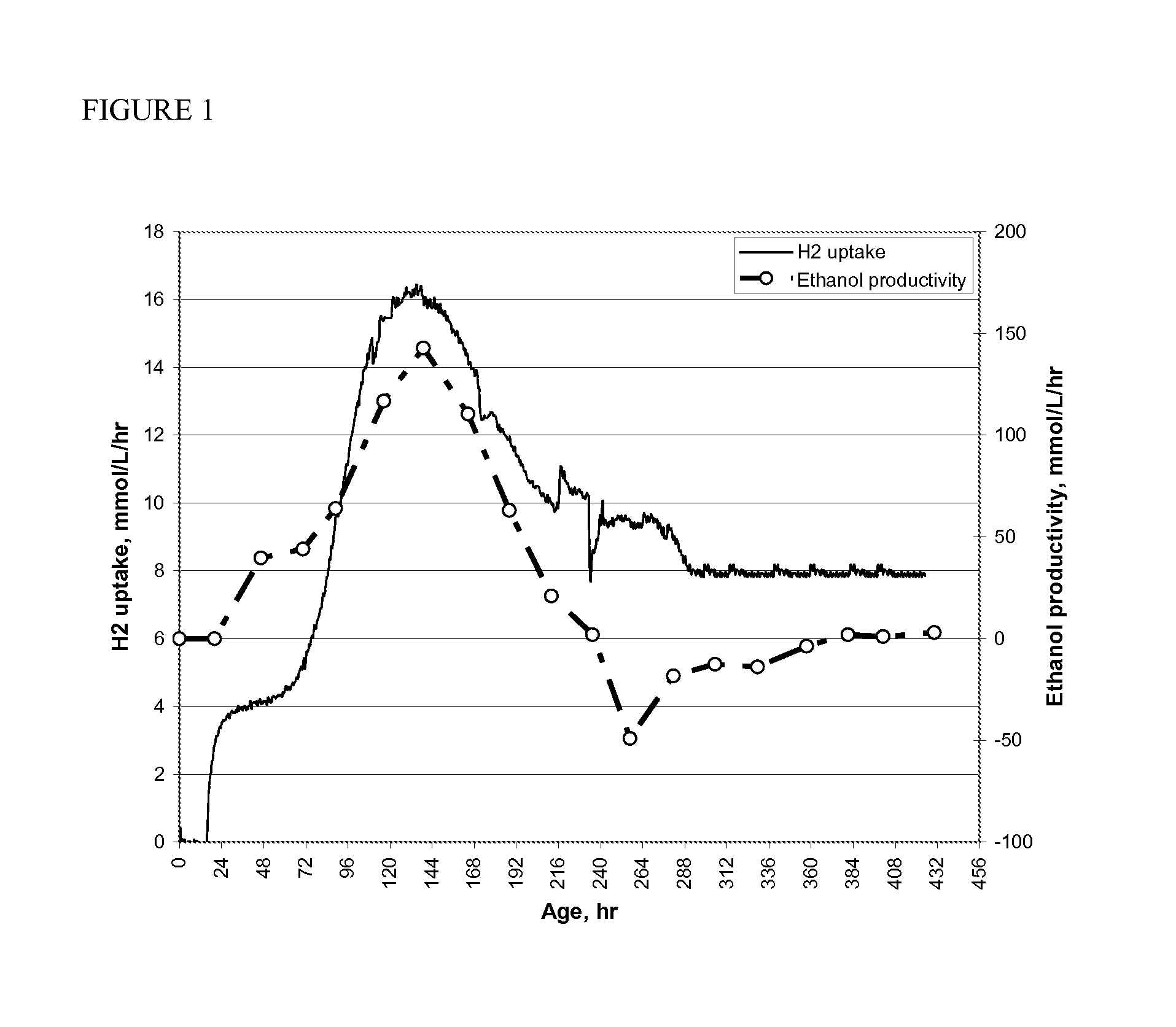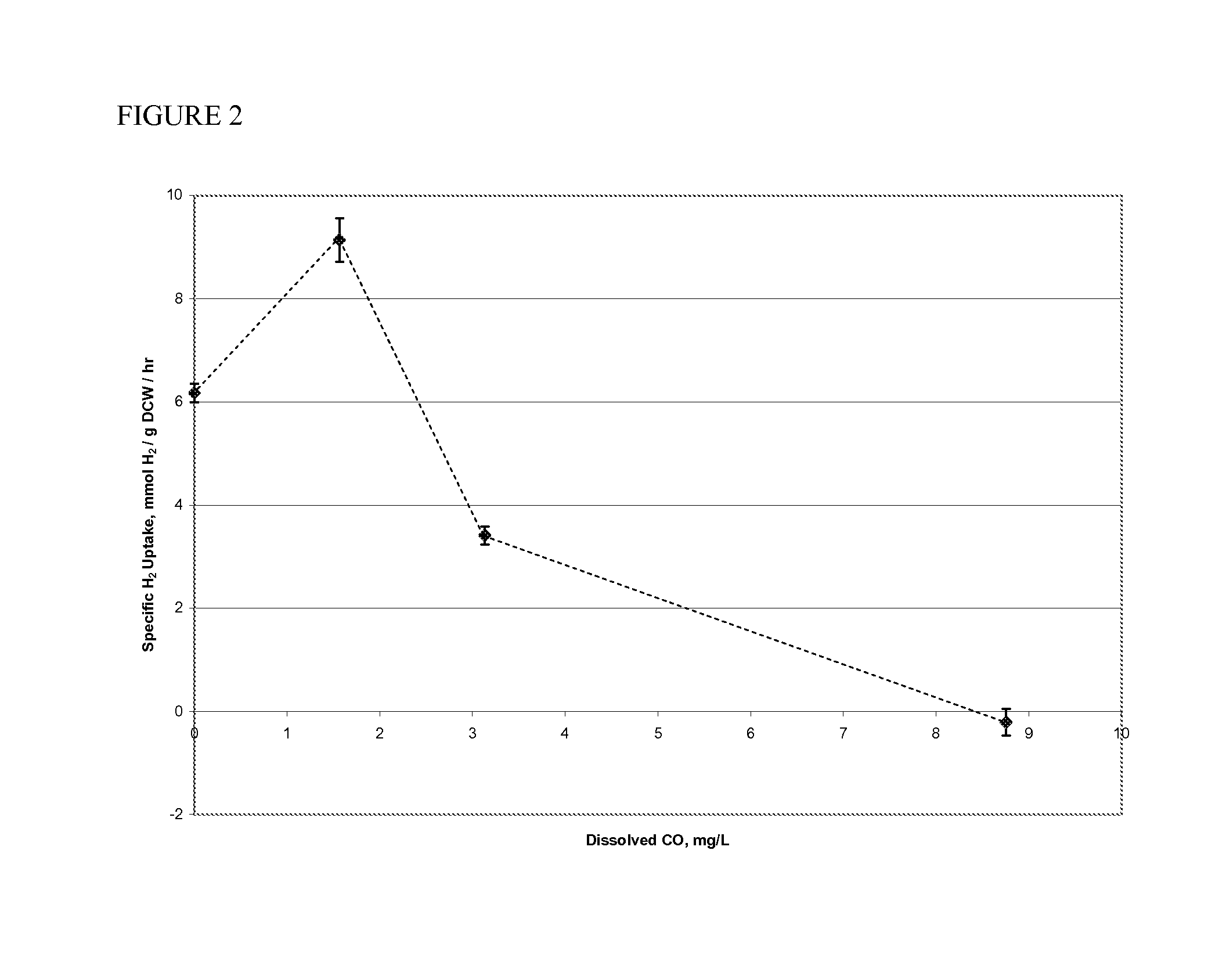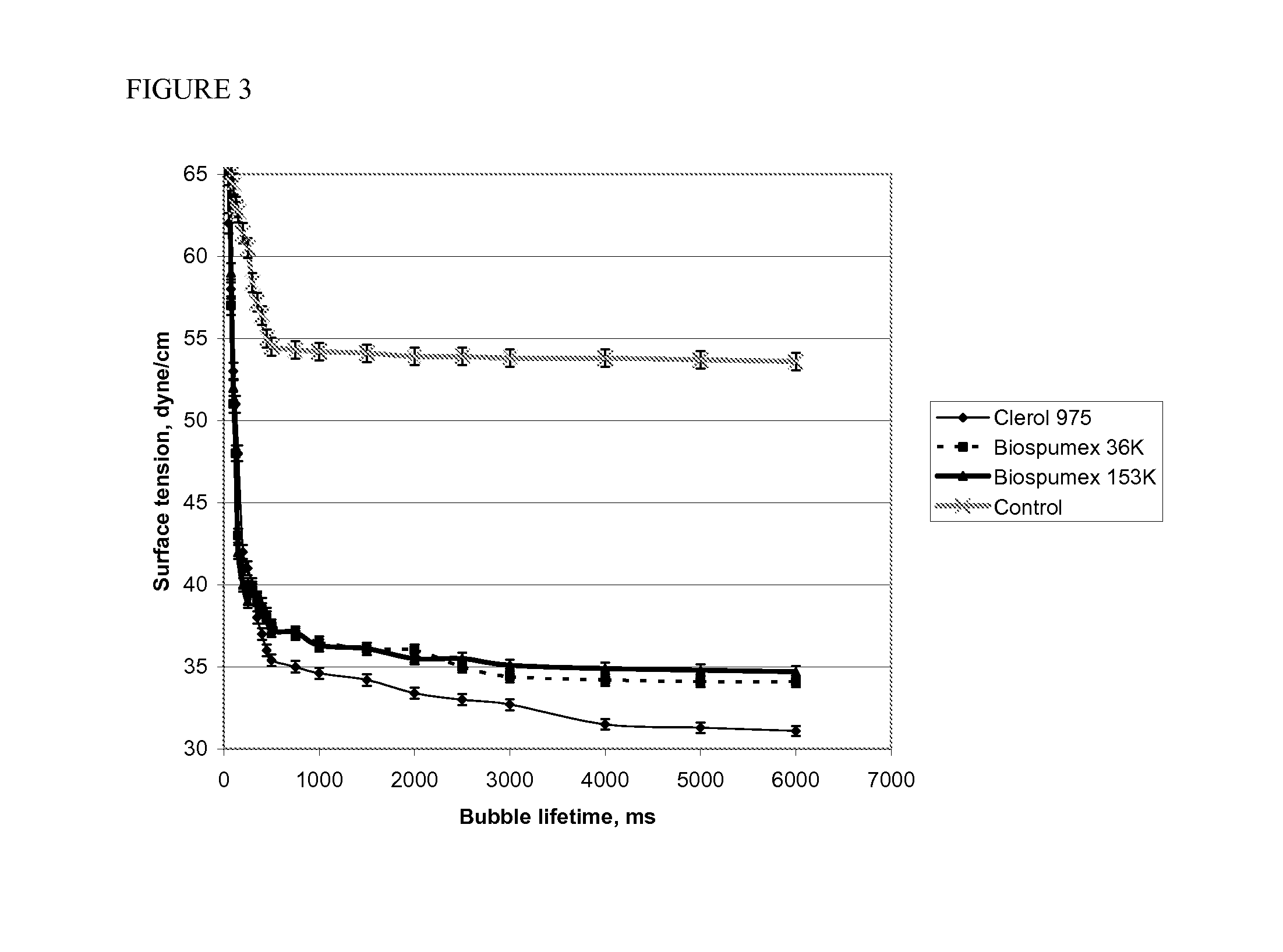Process for restricting carbon monoxide dissolution in a syngas fermentation
a technology of carbon monoxide dissolution and syngas fermentation, which is applied in the direction of fermentation, biofuels, bacteria, etc., can solve the problems of inhibiting cell growth, limited availability of agricultural feedstocks that provide readily fermentable carbohydrates, and inherently recalcitrant lignocellulosic materials to conversion, so as to improve the production of biofuels
- Summary
- Abstract
- Description
- Claims
- Application Information
AI Technical Summary
Benefits of technology
Problems solved by technology
Method used
Image
Examples
example 1
[0030]A 2 liter Sartorious Biostat B fermentor was run in CSTR mode at a gas flow rate of 0.13 vvm using a gas mix comprised of 7.5% CO, 33% H2, 26% CO2 and a balance of N2. After inoculation of the reactor with Clostridium autoethanogenum, a fermentation medium described in TABLE 1 was continuously fed to the reactor at a dilution rate of 0.35±0.05 per day. After achieving a steady-state condition (9.5 days prior to inoculation), the STAC, Cognis FBA 975US was added to the fermentor via a sterile 2.0 mL pulse addition from an aqueous stock bottle. Following a single pulse addition, an immediate change in the gas uptake profile was observed as shown by FIG. 4 in which CO uptake temporarily decreased by 77%, and hydrogen uptake increased by 132%. After approximately 41 hours, a steady increase in CO uptake was observed, which was accompanied by a gradual return of the hydrogen uptake rate to baseline conditions (prior to the initial STAC pulse) by approximately 115 hours. The calcula...
example 2
[0032]A 2 liter Sartorious Biostat B fermentor was run in CSTR mode at a gas flow rate of 0.13 vvm using a gas mix comprised of 7.5% CO, 33% H2, 26% CO2 and a balance of N2. After inoculation of the reactor with Clostridium coskatii, a fermentation medium described in TABLE 1 was continuously fed to the reactor at a dilution rate of 0.31±0.05 reactor volumes per day. The STAC, Cognis FBA 975US, was added to the fermentor at a rate of 20 mg per liter per day. The agitation rate was increased in a stepwise manner to a maximum rate of 700 rpm. Each of the step increase for agitation is accompanied by an increase in gas conversion efficiency for CO; however, no increase is observed for H2, indicating that under standard syngas fermentation conditions, H2 uptake is not limited in its uptake by mass transfer limitations. The primary target for the STAC Cognis FBA 975US is for limiting the toxic effects of dissolved CO through mass transfer of the gas into the feed broth of the fermentatio...
example 3
[0033]Toxicity screening data was collected following a 7 day syngas fermentation of Clostridium autoethanogenum in 120 mL serum vials. The data shows the lack of adverse impacts on ethanol and cellular growth for the three STACs evaluated at a concentration of 1,000 mg / L, which included Cognis FBA 975US, Cognis 36K, and Cognis 153K.
PUM
| Property | Measurement | Unit |
|---|---|---|
| concentration | aaaaa | aaaaa |
| concentration | aaaaa | aaaaa |
| concentrations | aaaaa | aaaaa |
Abstract
Description
Claims
Application Information
 Login to View More
Login to View More - R&D
- Intellectual Property
- Life Sciences
- Materials
- Tech Scout
- Unparalleled Data Quality
- Higher Quality Content
- 60% Fewer Hallucinations
Browse by: Latest US Patents, China's latest patents, Technical Efficacy Thesaurus, Application Domain, Technology Topic, Popular Technical Reports.
© 2025 PatSnap. All rights reserved.Legal|Privacy policy|Modern Slavery Act Transparency Statement|Sitemap|About US| Contact US: help@patsnap.com



